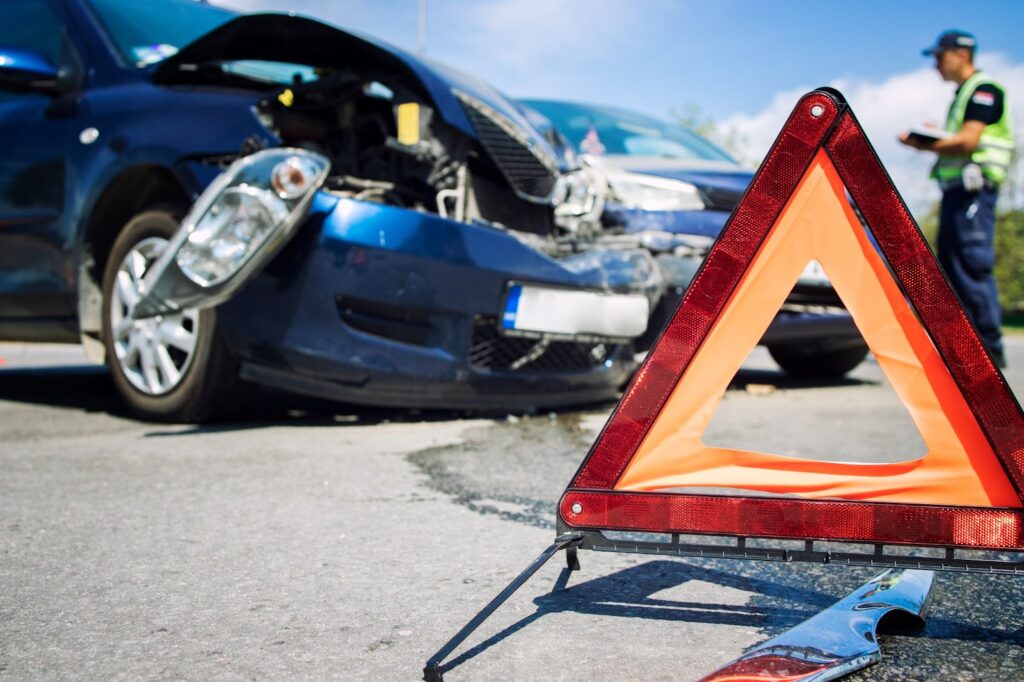Undeniably, accidents can evoke a sense of dread. They thrust upon you an immense strain, both physically and mentally, while also thrusting the burden of addressing the harm inflicted upon your automobile.
When your vehicle suffers significant damage, you’re faced with a critical decision point. Do you choose to pursue repairs, or is it perhaps the moment to contemplate the acquisition of a new one? This pivotal choice can be guided by your insurance provider. After conducting a comprehensive assessment of your car’s condition, the insurance company will ultimately make the call on whether it’s salvageable or not.
Now, let’s dig into the elements that factor into the classification of your car as a total loss, in order to gain a clearer understanding of this concept. But what happens next? Herein, we embark on an exploration of the terminology in play and its repercussions for your vehicle’s insurance coverage.
A Comprehensive Examination of Total Vehicle Loss: Understanding When a Car is Totaled
In the intricate realm of automotive insurance, the term “Total Loss” is a pivotal concept that plays a defining role in determining the fate of a damaged vehicle. But what exactly constitutes a “Total Loss,” and how do insurance companies arrive at this decision? Let’s embark on a comprehensive journey through the intricacies of Total Vehicle Loss, shedding light on the factors that insurance adjusters consider when assessing the fate of a vehicle.
Determining Total Loss: The Thresholds
The threshold at which a vehicle earns the label of being “totaled” is not set in stone. It’s a dynamic figure that varies among different insurance providers and regions. For instance, while some insurers may declare a car as totaled when repair costs exceed 80% of its pre-incident value, others, particularly in the United Arab Emirates, lean towards a more conservative 50% benchmark. Understanding these thresholds is crucial, as they can significantly impact the outcome of an insurance claim.
Tip: It’s essential to be aware of your insurer’s specific threshold for declaring a vehicle as a total loss. This knowledge can help you make informed decisions about your coverage and vehicle repairs.
In-depth Analysis of Total Loss and Vehicle Valuation
When it comes to assessing whether a vehicle is a total loss and determining its Actual Cash Value (ACV), a skilled insurance adjuster takes center stage. These experts embark on a meticulous journey of examination, considering both the physical and mechanical aspects of the vehicle. To arrive at an accurate ACV, adjusters delve into various factors, such as:
- Depreciation: Understanding how the vehicle’s value has diminished over time is crucial in assessing its worth. Older cars generally have a lower ACV due to depreciation;
- Production Year: The age of the vehicle is a critical factor. Older vehicles tend to have a lower ACV, while newer ones command higher values;
- Make and Model: The specific brand and design of the vehicle play a significant role. Luxury or rare models often have higher ACVs compared to mass-market counterparts;
- Mileage: The distance a vehicle has traveled impacts its condition and, consequently, its value. Low mileage can contribute to a higher ACV;
- Wear and Tear: The overall physical condition of the vehicle is scrutinized. Extensive wear and tear can lower the ACV;
- Market Demand: The current popularity and demand for the vehicle model are assessed. Vehicles in high demand may have a higher ACV.
The Actual Cash Value (ACV) stands as a preliminary estimate of a vehicle’s worth in the marketplace prior to any untoward incident. Should the expenses needed for repairs exceed the halfway point of this ACV, it has become customary to categorize the vehicle as a complete loss. It is crucial to bear in mind, however, that the ACV is not a static number; it can oscillate due to a myriad of factors, resulting in disparities in the definition of a total loss across various scenarios.
In-depth Perspective: While a vehicle with a decade of service and minor impairments might meet the criteria for total loss due to its relatively modest ACV and the substantial cost of restoration, a pristine, recently manufactured vehicle, even when significantly damaged, might elude the total loss classification due to its lofty ACV countering the repair expenses. Grasping these intricate dynamics can empower policyholders to navigate the intricacies of Total Vehicle Loss and arrive at well-informed decisions regarding the fate of their compromised automobiles.
Exploring the Total Loss Process in Vehicle Insurance
When your cherished vehicle is declared a Total Loss by your insurance company, it sets off a series of procedures designed to provide you with compensation. This compensation is rooted in the insured value you agreed upon when you first obtained your insurance policy. Let’s delve deeper into this process, uncovering key insights and valuable recommendations for navigating it effectively.

Valuation and Compensation:
- Utilization of Insured Value: Central to the process of Total Loss compensation is the initial establishment of the declared vehicle value at the commencement of your insurance policy. This designated sum serves as the bedrock upon which the calculation of the compensation you are entitled to is based;
- Accounting for Depreciation: Generally, insurance providers apply a standard depreciation rate of approximately 20% per year to the insured value. This adjustment plays a pivotal role in determining the ultimate compensation amount, taking into account the natural deterioration of your vehicle over time;
- Special Provisions for Newly Purchased Vehicles: In the case of vehicles less than one year old, unique considerations come into play. Their value is assessed on a pro-rata basis, ensuring equitable compensation based on the current market value. This may manifest as financial support for acquiring a replacement vehicle or covering the expenses associated with a comparable model.
When the Vehicle is Repairable:
- Role of Deductibles: If your vehicle can be salvaged and repaired, the cost of these repairs will be influenced by the deductible you agreed upon in your policy. Higher deductibles can reduce your premiums but may result in higher out-of-pocket expenses in case of repairs;
- Maximizing Benefits with Comprehensive Insurance;
- Collision Coverage as a Safety Net: Opting for comprehensive car insurance, particularly with inclusive collision coverage, can be a game-changer. It acts as a financial safety net, alleviating the financial burden in the event of a Total Loss. This coverage may also extend to cover damage resulting from accidents, theft, and even natural disasters;
- Mitigating Financial Strain: In the UAE and elsewhere, automobile insurance plays a crucial role in lessening the financial impact associated with purchasing a new vehicle after a Total Loss. It’s not just a legal requirement; it’s a smart financial move that can protect your financial well-being.
Recommendations for Car Owners:
- Investing in Comprehensive Coverage: Car owners should prioritize obtaining extensive insurance coverage that is specifically tailored to their vehicle’s unique requirements. Rather than settling for the bare minimum legal mandates, opting for adequate coverage guarantees maximum benefits and unwavering support during crucial situations;
- Grasping Policy Terms: Devote time to acquaint yourself with the terms of your insurance policy, particularly those that pertain to concepts like Total Loss and depreciation. This knowledge empowers you to make well-informed choices and navigate the claims process with a sense of assurance;
- Keeping Documentation Current: It is imperative to ensure that all your paperwork and vehicle information are kept up-to-date and easily accessible. This straightforward measure streamlines the claims procedure, rendering it more efficient and seamless.
By adhering to these proactive measures and acquiring a profound comprehension of the intricacies of vehicle insurance, car owners can safeguard their interests comprehensively. They can also ensure they are adequately prepared to address the financial consequences of a Total Loss situation, providing them with peace of mind during times of uncertainty. Always bear in mind that insurance serves not only as a safety net but also as an indispensable financial instrument safeguarding both your investment and your future.
Conclusion
In conclusion, grasping the intricacies of the total loss concept and its method of computation stands as a pivotal knowledge point for individuals navigating the intricate landscape of insurance, especially within the realm of auto insurance. Total loss transpires when the expenses associated with mending or rejuvenating a damaged vehicle surpass its present market value, leading to the designation of the automobile as a complete loss. The process of ascertaining total loss typically entails the evaluation of the vehicle’s current market worth, accounting for depreciation and any potential salvage value, and juxtaposing it with the cost entailed in the necessary repairs.
The methodology employed in this calculation can exhibit variances between different insurance companies and may also be subject to state-imposed regulations. It becomes imperative for policyholders to acquaint themselves with the particular methodologies adopted by their insurance providers. Such awareness fosters transparency and upholds the principles of fairness in the evaluation of total loss situations.
